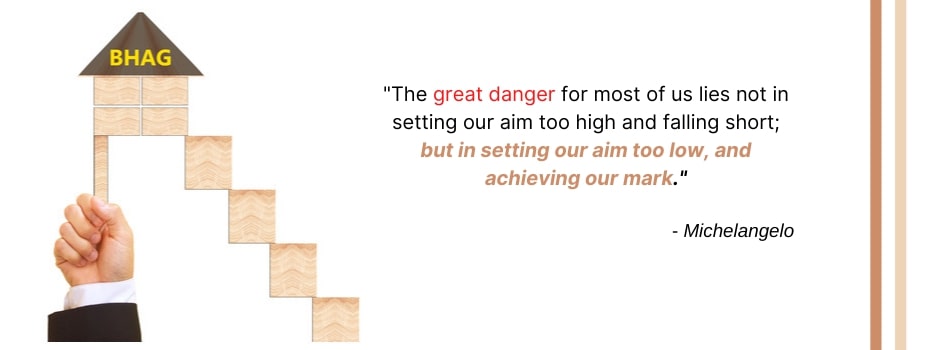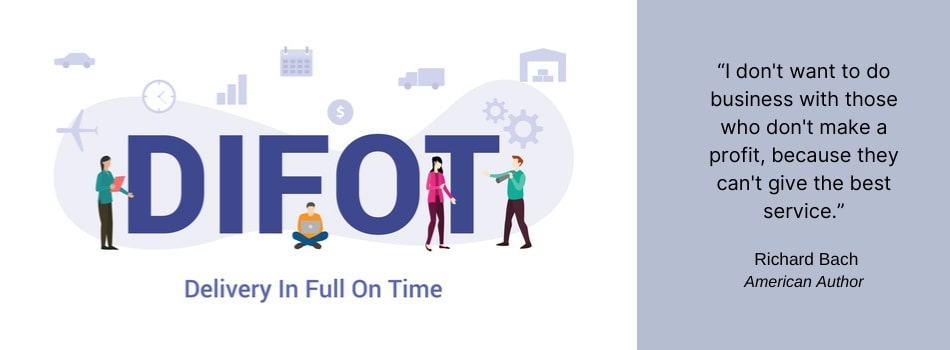Achieving business goals successfully is rather like working in a sports team. Some teams are really successful, some aren’t. Some have great coaches—and some just don’t seem to make it.
So what makes the difference? Why do some businesses and organisations seem to achieve far more than others?
As a consultant, I work with many businesses. Some just seem to get things done. They have an enormous number of projects going on and they achieve great goals, while others struggle and seem to spin their wheels all the time.
The BHAG—the Big Hairy, Audacious Goal

I recently attended a great presentation during which the presenter referred to a BHAG—a big hairy audacious goal. I think we’ve seen that in a lot of businesses. I am sure you know of companies where these goals are put up on notice boards, but often they just never seem to be achieved.

The idea of a BHAG was conceived by James Collins and Jerry Porras in their book “Built to Last: Successful Habits of Visionary Companies”. The authors define a BHAG as a long-term goal that changes the very nature of a business’s existence.
A BHAG, as they put it, “engages people, it reaches out and grabs them in the gut. It’s tangible, energising, highly focused, and people get it right away—it doesn’t need further explanation.”
The person who gave the presentation I attended offered the example of a speech by late US President John F. Kennedy: “This nation should commit itself to achieving the goal, before the decade is out, of landing a man on the moon and getting him safely back to Earth.”

That was a fantastic big, hairy, and audacious goal that galvanised the nation behind the whole lunar programme.
How does all this fit with your situation and your business? One of the things that can go wrong when you set these big, hairy, audacious goals is that people don’t believe they are achievable.
One of the causes of this is that we get set in paradigms. We’re used to things being difficult, we’re used to things being done in a certain way, and we don’t believe that the world can change or that our performance can lift significantly.
A Compelling Reason to set a BHAG
As I explain in a YouTube video on this subject, I recently saw a good example of how a BHAG can galvanise a workforce and make a dramatic impact on productivity.
One of our consulting clients, a leading automotive parts distributor in Australia, recognised that the picking productivity in their warehouse was not good—somewhere around 15 lines per hour.

They did a benchmarking exercise with us and we found that the industry standard was about 40 lines per hour. So, you can imagine the reaction within the warehouse when they announced that they had set a goal of 40 lines per hour. People just didn’t believe it was possible—and that’s the problem. You have got to shift people’s paradigms.
The Improvement Programme
The company in question went through a process of engaging people in the warehouse on an improvement programme. They set the bar a bit lower and said, let us try to achieve 30 lines per hour over the next 12 months.
Bit by bit, people became engaged in the programme and started to come up with suggestions. Slowly the productivity went up. They hit 30 lines per hour way before the 12 months was up.

In fact, they hit 40 within 12 months. And now, 18 months into the programme, they are about to hit 50. So, after two years, not only had this company increased their line picking rate from 15 to 50 per hour, they also reaped some very tangible benefits.
For example, their increase in productivity was 217 percent. That translated to a Delivery in full, on time (DIFOT) of 99.72 percent. They achieved a massive productivity increase, plus a lifted service level, which customers love.

And you know what happens when service levels increase? Customers buy more. The company registered a profit increase of over 40 percent through that one initiative alone.
How is all that possible? A goal was put to the team who initially thought it was impossible, but they actually kicked it out of the park. That’s the sort of thing that excites me: how you can use frameworks like that to achieve great things in your organisation, in your own departments.
Motivators Get People Motivated

It all comes down to motivation. People respond to encouragement from their company and, generally, are willing to produce better results if their efforts are recognised.
It has been shown, for example, that if an enterprise measures productivity and compensates accordingly, productivity usually improves. This is particularly so if management sets a big, hairy, audacious goal and motivates employees to strive to meet the challenge.
Many companies do not have systems of compensation in place for such a scenario. They may have a bonus system for total dollars saved, but this ignores value—and profit—that has been created through meeting, or even beating, the challenge.
The Key to it all: Training
Often companies will make their supply chain managers responsible for overseeing the productivity drive without providing enough training or putting sufficient motivators in place. If managers are not suitably trained or motivated, you can be sure that their teams will be underperform.
Holding the manager accountable is crucial to productivity improvement, but as illustrated in my example above of the automotive parts company’s BHAG, staff training is essential.
In the case of the manager, training should cover the productivity details to be monitored, the importance of improvements in productivity, and how staff incentives will be applied. Having been trained and motivated, the supply chain manager will then be expected to perform the following duties:

- Gather the relevant productivity data
- Decide the focus of the programme
- Determine operating methods
- Define the necessary productivity performance measures
- Coordinate with C-suite and heads of other departments involved in the project
- Monitor productivity performance and identify fault-lines.
BHAGs are Long-term Solutions
BHAGs usually have long term targets, sometimes with horizons up to ten years out. It may take months to set up the relevant training programmes and realign the various elements of the supply chain to facilitate the changes.
But think of the potential rewards, which, as I have personally witnessed, and recounted in this article, can be as dramatic as:
- A 217 percent productivity increase
- A Delivery in full, on time (DIFOT) of 99.72 percent
- A 40 percent increase in profits
So, think big, think hairy, think audacious—and then shoot for the goal.

This article is based on a video from the Supply Chain Secrets YouTube channel. It is home to a wealth of supply chain information and we post a new topic every week to help subscribers stay abreast of industry trends and developments.
In return, we ask for nothing but your attention and thirst for supply chain knowledge, so why not stop by and subscribe today?
Editor’s Note: This post was originally published on January 26, 2021, under the title “Raising Productivity in Logistics Operations: The BHAG Approach” on Logistics Bureau’s website.

